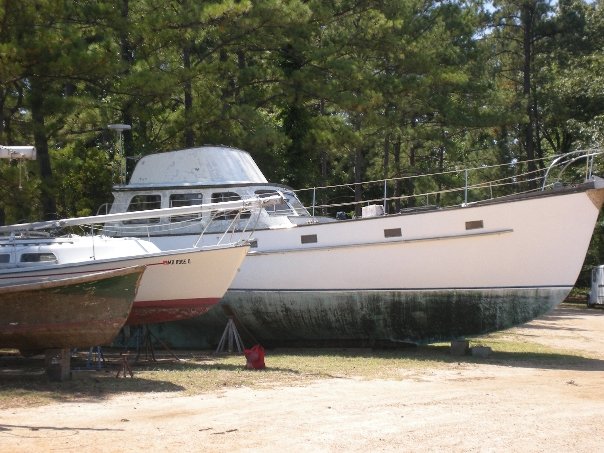
The Boat: “Gypsy”, a 41′ fiberglass motorsailer, built sometime in the 1970s. Currently “on the hard” at Tall Timbers Marina in Maryland, and has been for the better part of 20 years. This picture was taken in August, 2009.
The Plan: Refurbish and refit her, with the goal of a comfortable liveaboard, and potentially cruise to the Caribbean– some place warm with clear water.
Gypsy was abandoned on shore– the previous owner paid her dockage fees like clockwork, apparently with the intention of someday refurbishing her himself. He unfortunately died before realizing this dream. His surviving family apparently did not share this sentiment– they paid one month’s slip fee, came to visit and took one look… and ran. Never paid anything again.
Learning of this last summer, we struck a deal with the marina owner: he would acquire the title through the abandonment laws, we would pay the back-dockage, and he would sign the title over to us. From then on, we’d pay the ongoing dockage, of course. A win-win, right? Well, we’ll see about that.
When we first went aboard for a look, we found a true diamond-in-the-rough. Trash scattered everywhere, rotted panels falling away from the bulkheads from water incursion– the aft hold hatch-covers were stove in, the aft hold filled with mud and pine-needles. There was the mummified remains of a cat draped over a cleat on the fore-deck; one area of the aft hold had a healthy layer of green moss. A fellow IMHer quipped “you’ll need a wetlands permit to clean that up!”
But underneath the years’ accumulation of detritus was a solid hull without a single soft-spot– this fiberglass hull is five inches thick at the turn of the bilge. Rapping your knuckles on the hull feels more like knocking on cinder-block than on a wooden door, like other fiberglass hulls. The deck is similarly built, with a teak top layer. The teak itself is dirty and has some strips popping up, but there’s no sign of water incursion through the deck– only a couple of leaks where the deck meets the hull, around the salon windows and through the air vents from the bridge. Most of the wood rot and mildew, it turns out, is due to condensation over the years.
So far, I’ve inspected and repaired, replaced or capped most of the thru-hulls and sea-cocks. Both stuffing boxes have been cleaned out and are waiting for new packing, once the port shaft is repaired/replaced. It has some pit-corrosion at the stuffing-box that needs attention. She has three working bilge-pumps and a battery now, so no more wetlands in the aft hold. I still need to rehab the rudder packing gland and finish the thru-hulls and sea-cocks. The noxious fluid-that-was-once-diesel in the fuel tanks needs to be pumped out and disposed of and the tanks cleaned. The bottom needs to be sanded and painted– might as well do that before we put her back in the water. With persistence, I hope to have her floating by late spring.
We decided to rename her, but haven’t come up with a new name yet. The proper denaming ceremony will be performed to appease Mighty Neptune before she is re-christened– complete with a re-launching party!
Now I’m off to install bilge-pump switches…
–Kirk

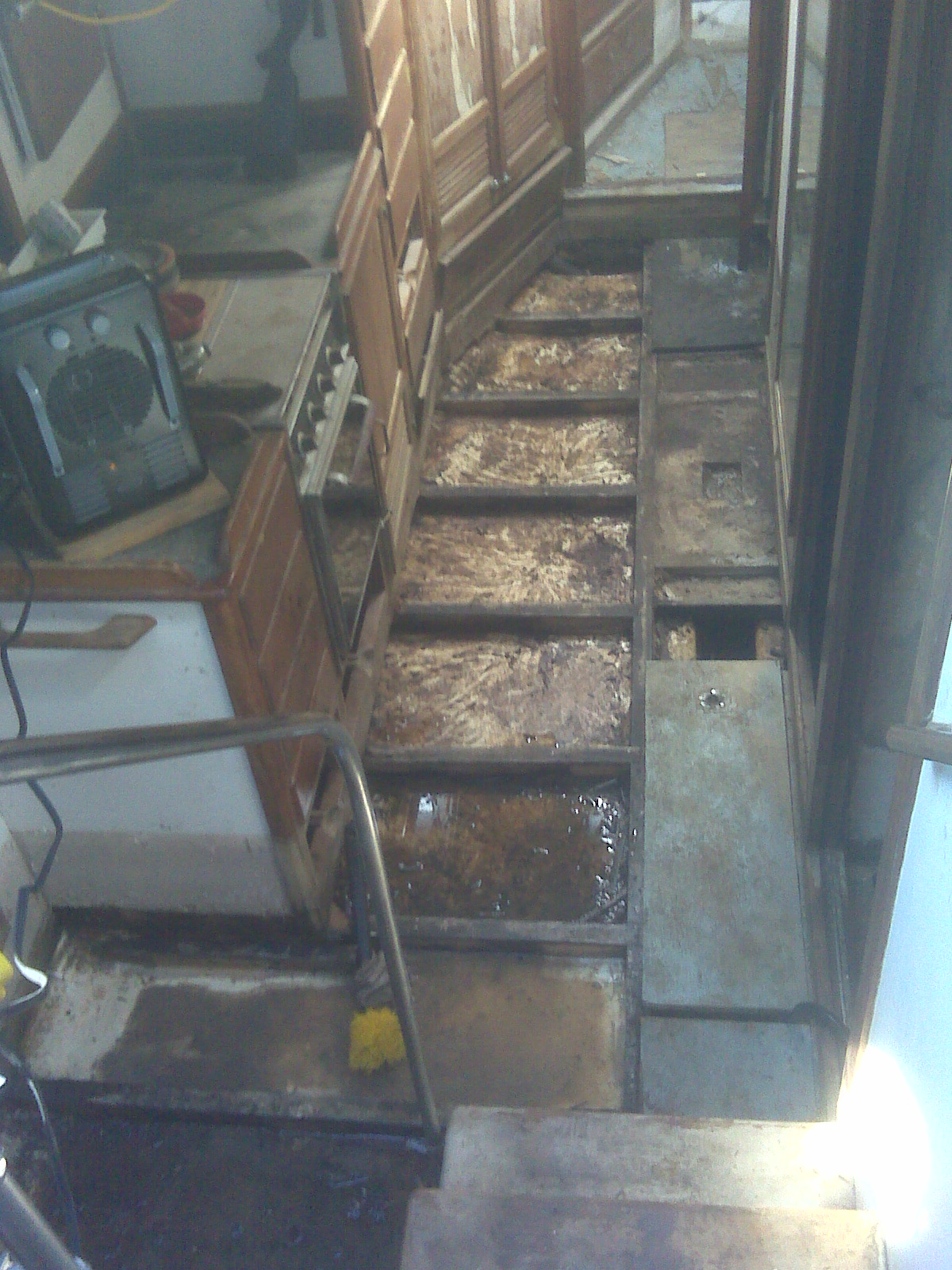
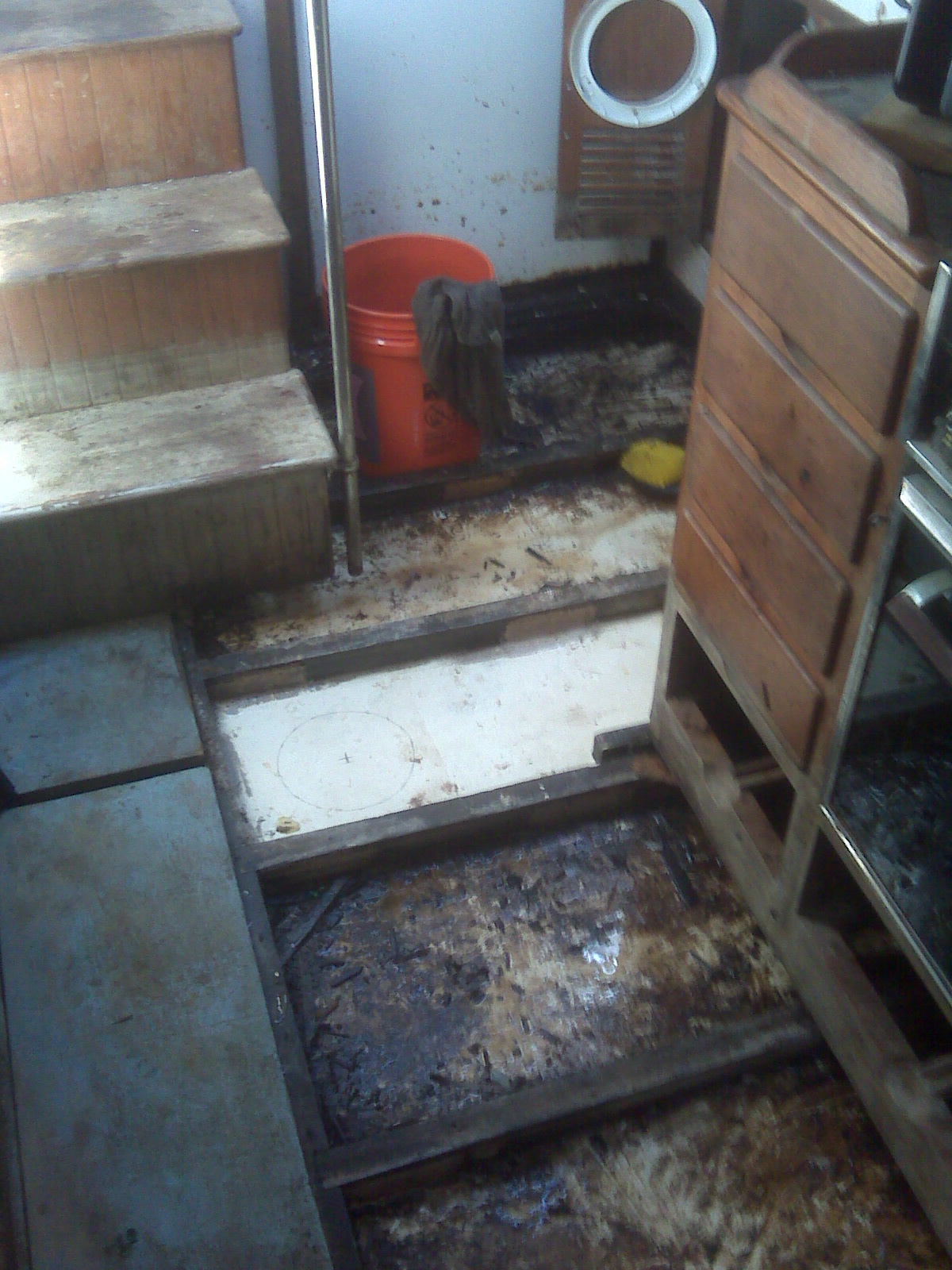
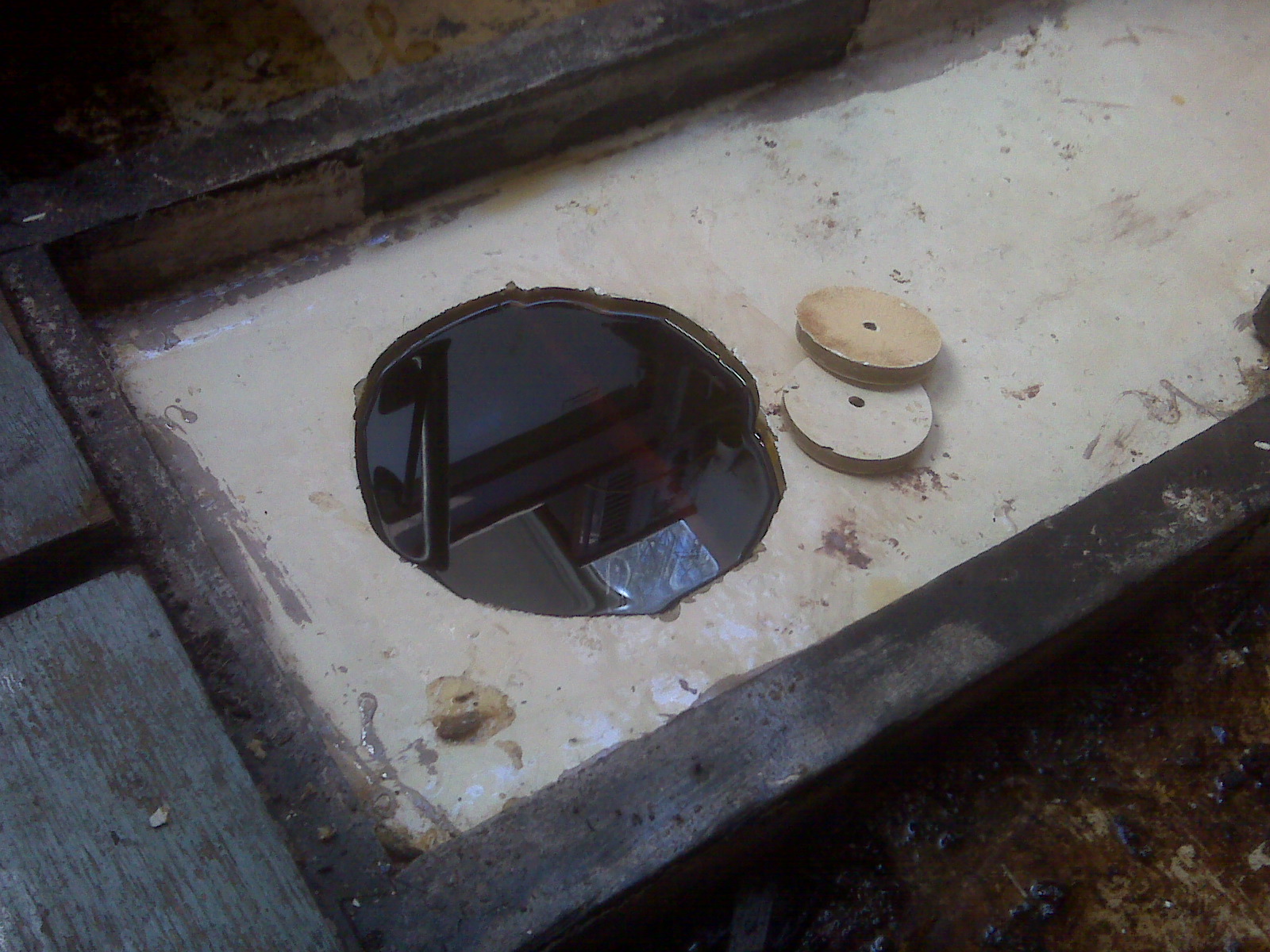
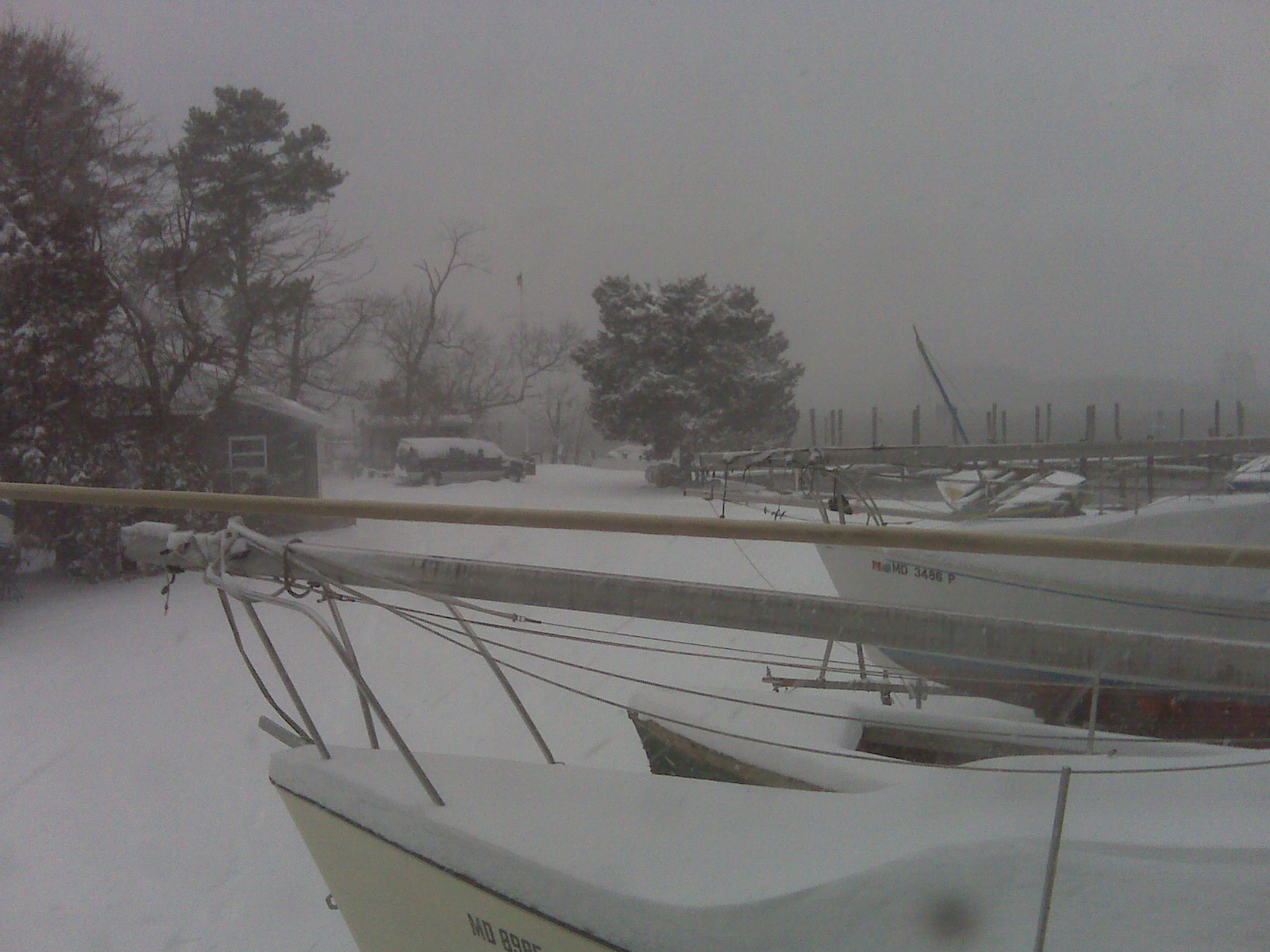
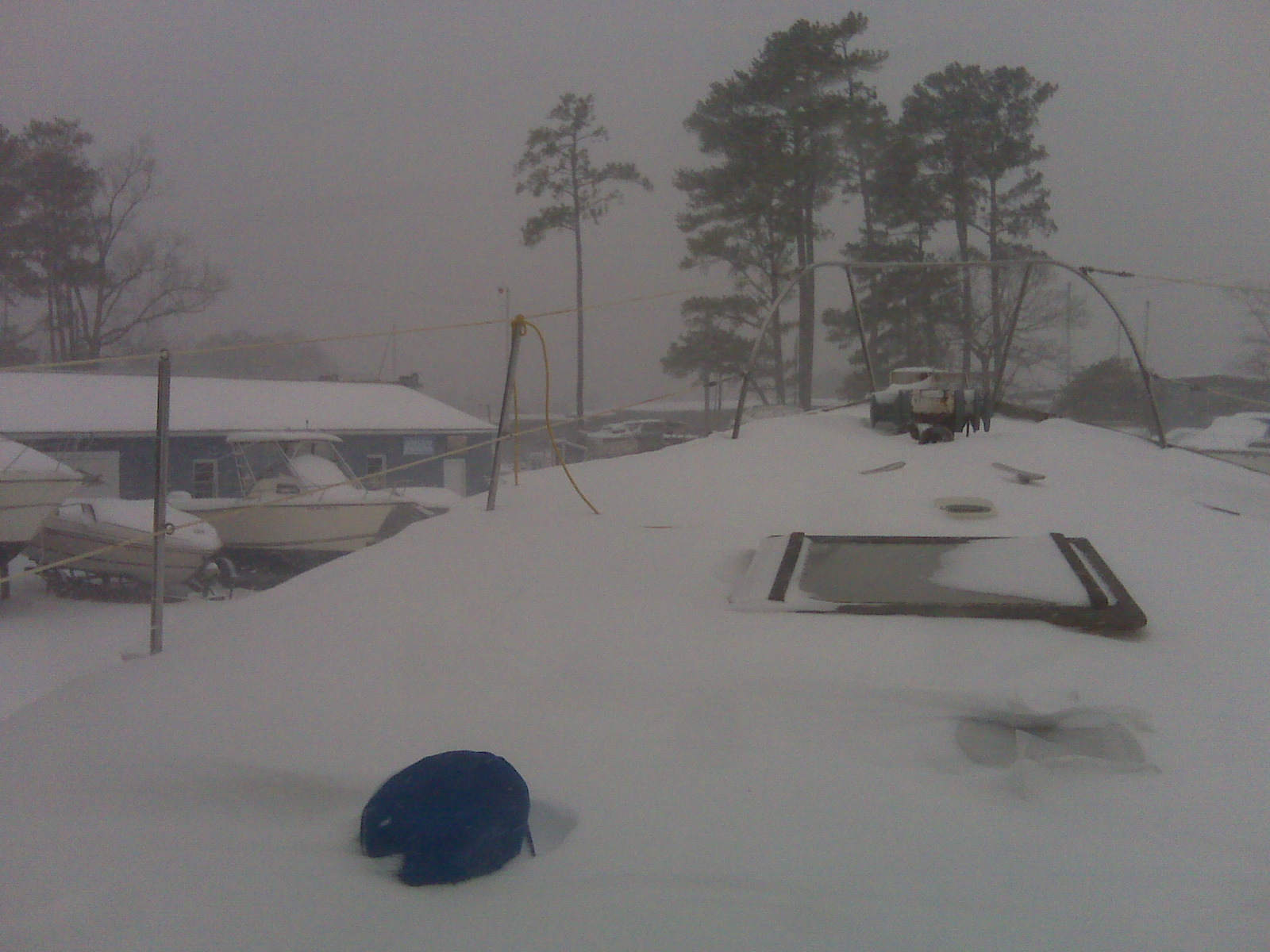
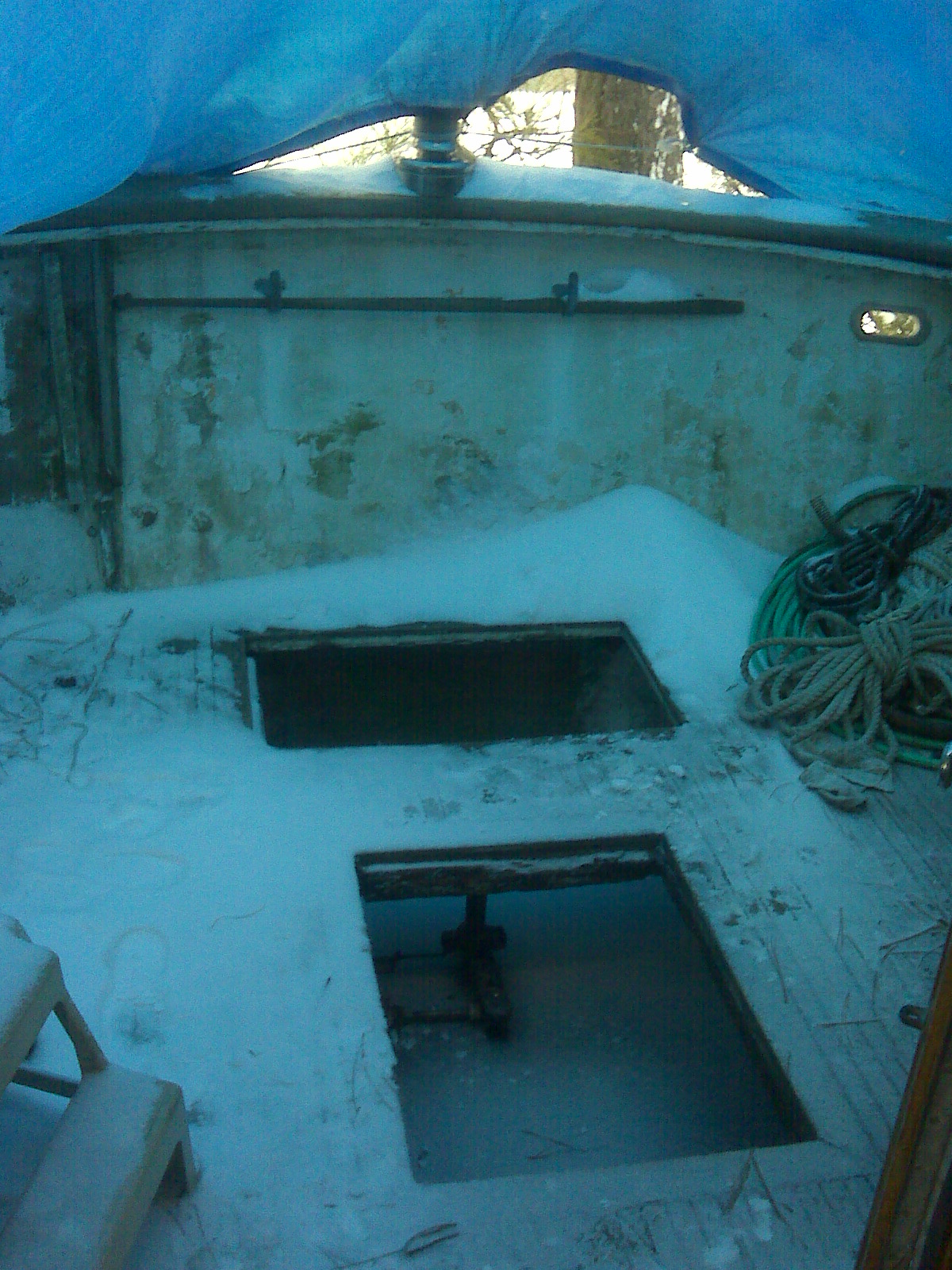 I found the aft hold filled with solid ice– somewhere down in there is a bilge-pump. Not a good idea to try to run ’em when they’re embedded in ice, so it’s a perfect time to re-run the wiring and install the fused switches. They’re done (short of mounting the panel), but can’t be tested until the ice melts.
I found the aft hold filled with solid ice– somewhere down in there is a bilge-pump. Not a good idea to try to run ’em when they’re embedded in ice, so it’s a perfect time to re-run the wiring and install the fused switches. They’re done (short of mounting the panel), but can’t be tested until the ice melts.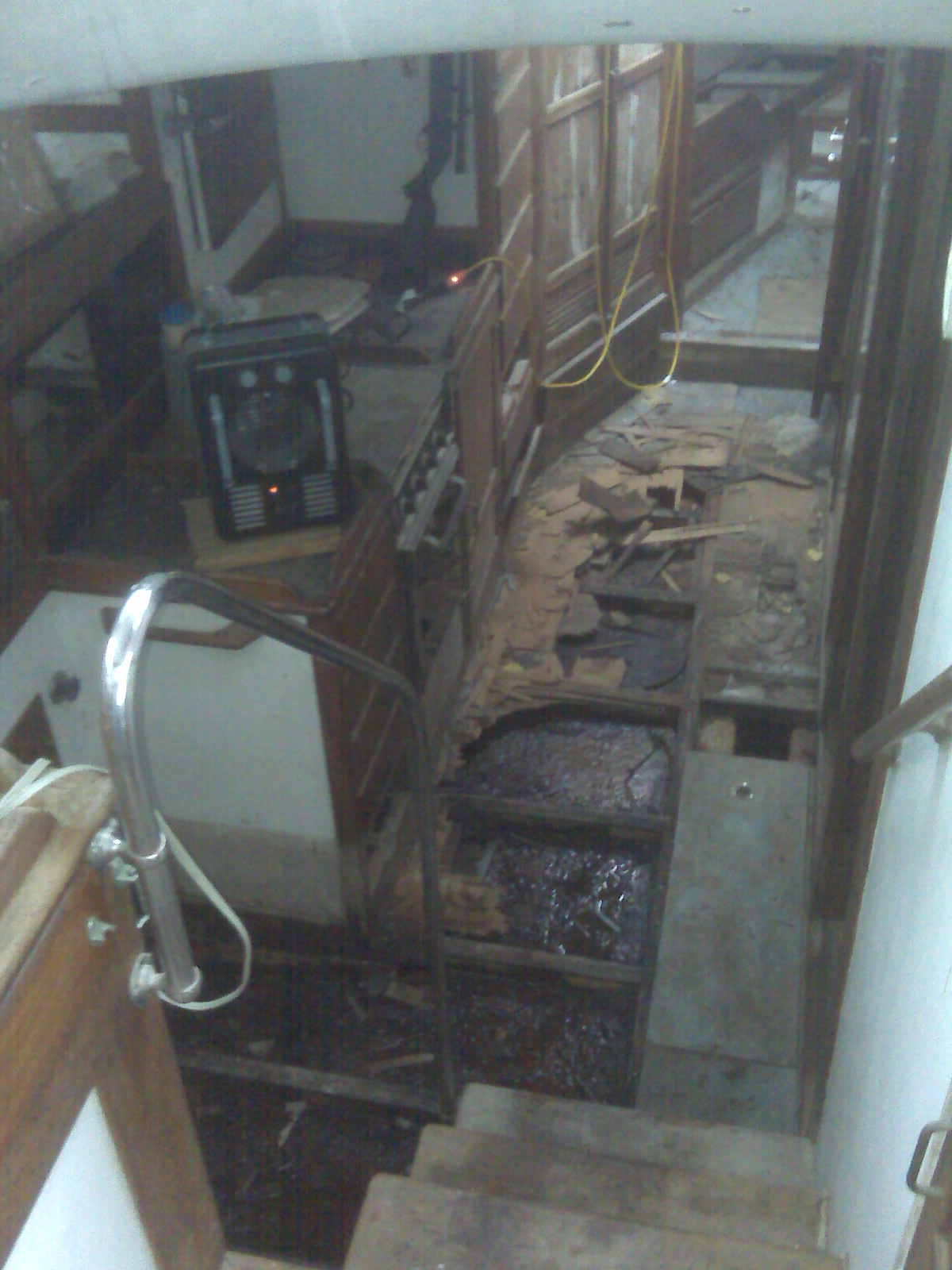 The ice standing on the tops of the fuel tanks below the rotted cabin-sole also prevents me from cleaning that out– the splinters of old plywood are embedded in it. Eventually I hope to find/clean out/install limber-holes in the deck supports to let any water standing on the tanks to drain into the “slot” between them, where the forward pump is. Once she’s afloat, the motion of the ocean should help that along. You can see the “slot” in this picture at the bottom of the companionway stairs, mostly covered by a rotted, removable cover. The space-heater took the edge off the cold, but the snow I tracked in on the salon floor never melted. Draw your own conclusions.
The ice standing on the tops of the fuel tanks below the rotted cabin-sole also prevents me from cleaning that out– the splinters of old plywood are embedded in it. Eventually I hope to find/clean out/install limber-holes in the deck supports to let any water standing on the tanks to drain into the “slot” between them, where the forward pump is. Once she’s afloat, the motion of the ocean should help that along. You can see the “slot” in this picture at the bottom of the companionway stairs, mostly covered by a rotted, removable cover. The space-heater took the edge off the cold, but the snow I tracked in on the salon floor never melted. Draw your own conclusions.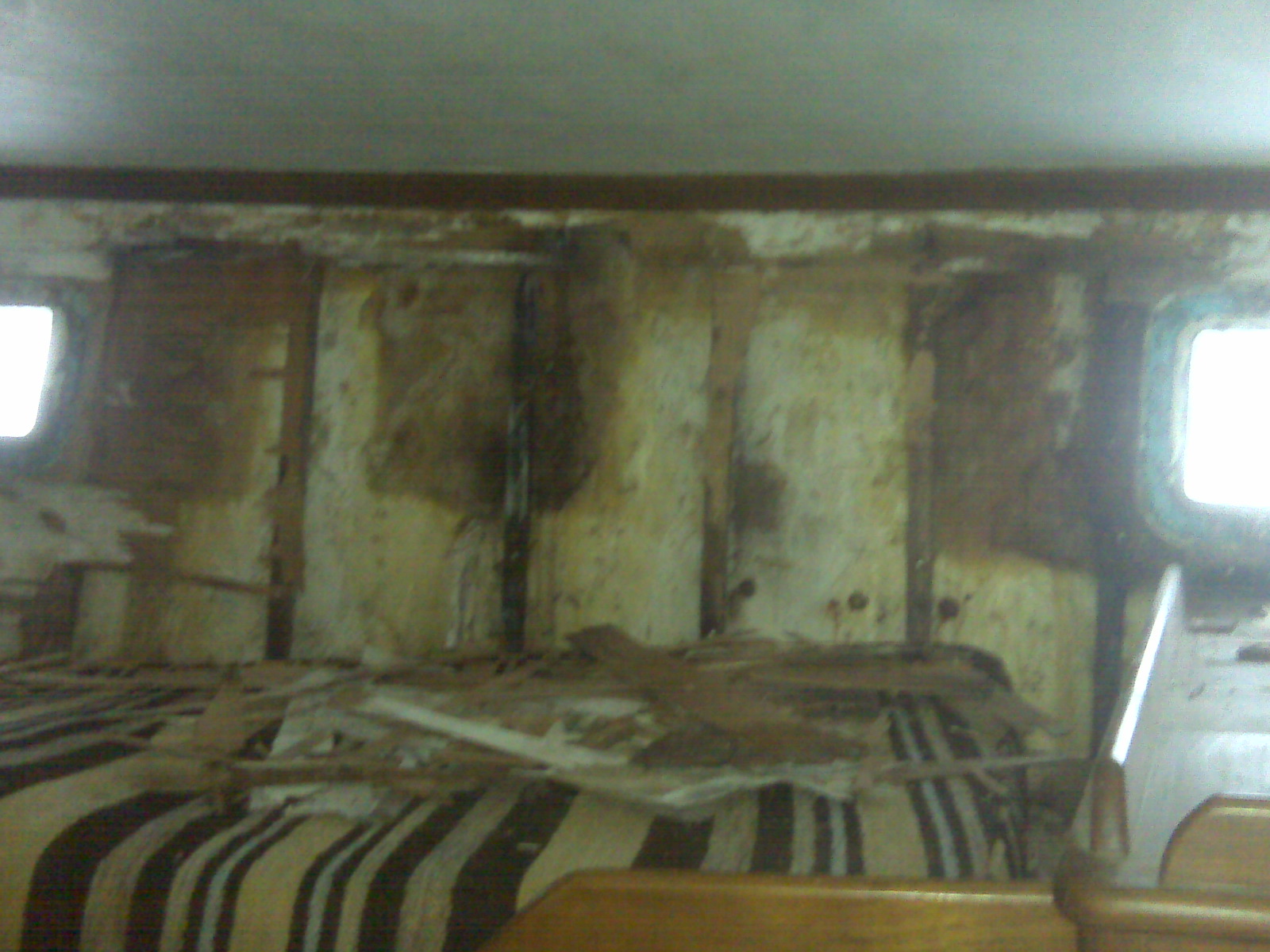 Here’s a shot of the worst weather leak– the water runs in between the deck and the hull. The plywood bulkheads are completely rotted away and the fiberglass is discolored, but still solid. I’m continually amazed at how good condition the structural parts of this boat remain. The frames along the hull are solid as ever, as are the deck supports, etc. everywhere else. Only the cosmetic bits have rotted over the years.
Here’s a shot of the worst weather leak– the water runs in between the deck and the hull. The plywood bulkheads are completely rotted away and the fiberglass is discolored, but still solid. I’m continually amazed at how good condition the structural parts of this boat remain. The frames along the hull are solid as ever, as are the deck supports, etc. everywhere else. Only the cosmetic bits have rotted over the years.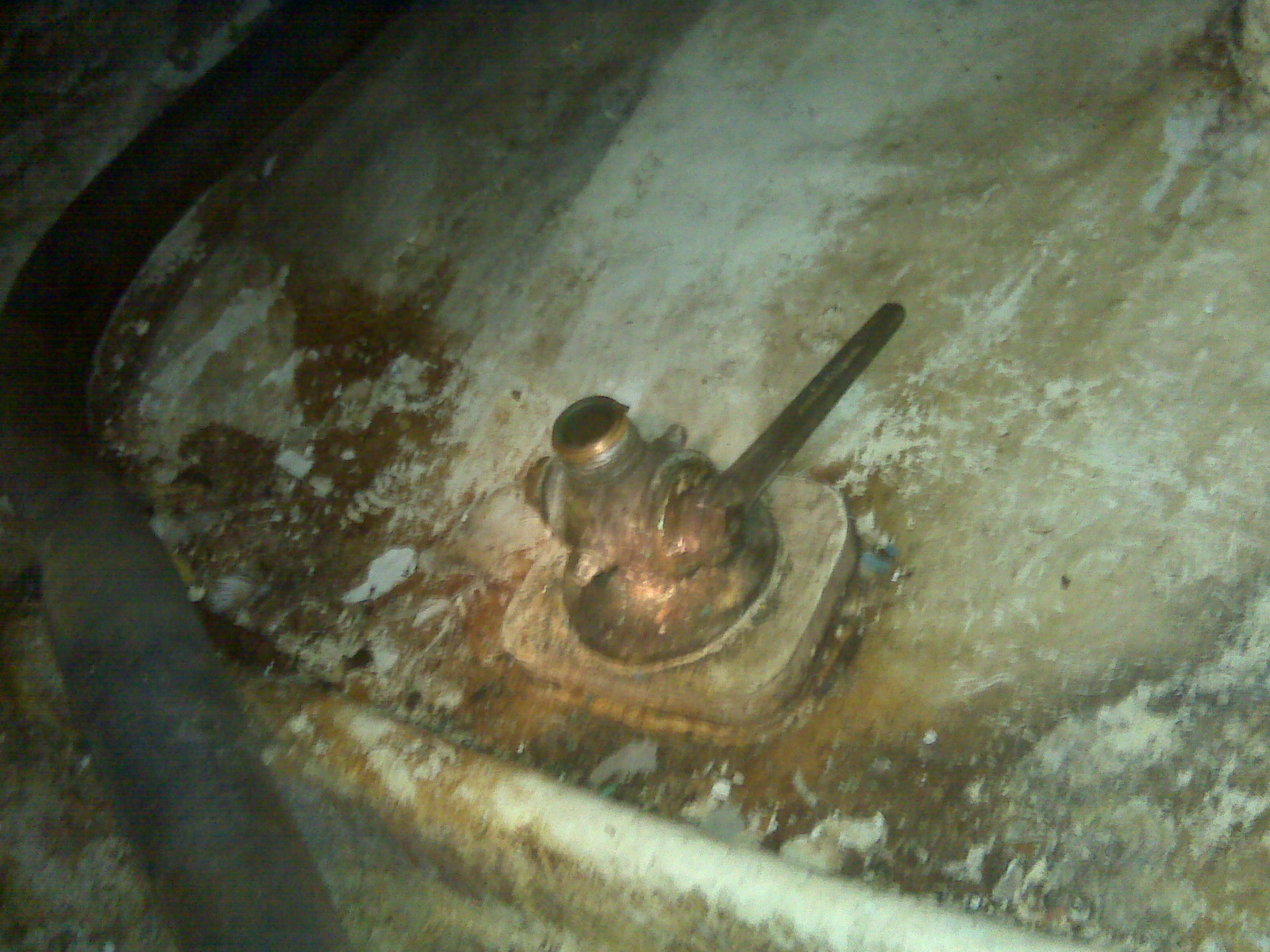 Before the cold set in, I had been working on the thru-hulls and sea-cocks. Here’s a shot of an original engine raw-water intake. This one was in good shape, only needing to be disassembled, cleaned, lubricated and put back together. Another one forward, which had been connected to some less-than-marine-grade plumbing (one tee-fitting was so corroded it fell to pieces when I put a wrench on it) had to be replaced.
Before the cold set in, I had been working on the thru-hulls and sea-cocks. Here’s a shot of an original engine raw-water intake. This one was in good shape, only needing to be disassembled, cleaned, lubricated and put back together. Another one forward, which had been connected to some less-than-marine-grade plumbing (one tee-fitting was so corroded it fell to pieces when I put a wrench on it) had to be replaced.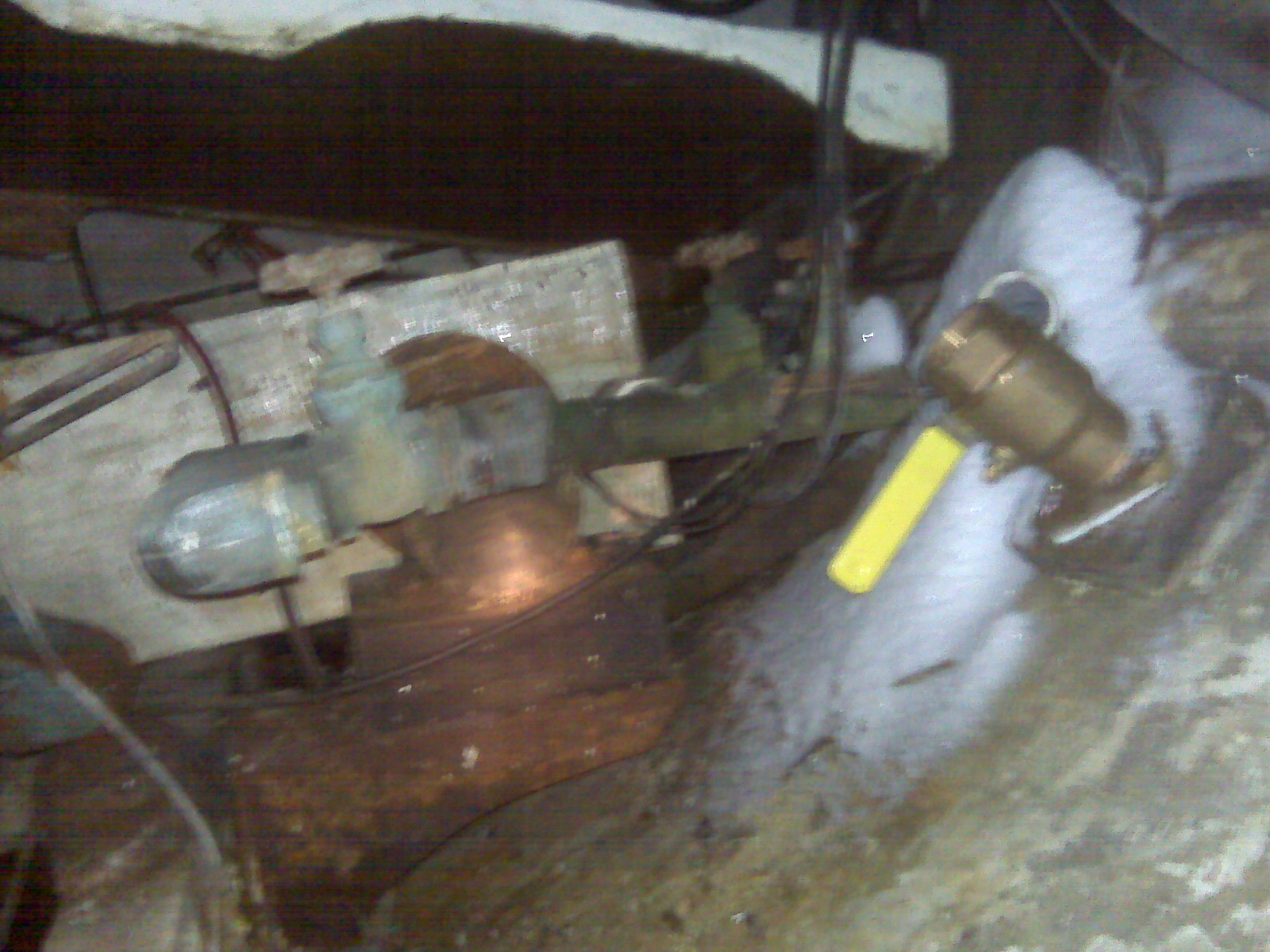 Here’s the new one (with the yellow handle). Somewhere above it some air (carrying blowing snow) is coming in, probably from a disconnected deck-scupper. You can see the remains of some of the old plumbing on the left. Sorry for the picture quality, but low light levels on a cell-phone camera, with shaky frozen hands…
Here’s the new one (with the yellow handle). Somewhere above it some air (carrying blowing snow) is coming in, probably from a disconnected deck-scupper. You can see the remains of some of the old plumbing on the left. Sorry for the picture quality, but low light levels on a cell-phone camera, with shaky frozen hands…